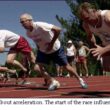What are embryonic stem cells and how can they help us?

All living things, including humans, are made of cells. Each tissue and organ of the body contain cells that are specialized to perform specific jobs-the brain contains neurons, the eyes contain light-detecting cells and so on. All human life begins with the encounter between two cells: the sperm cell from the father and the egg cell from the mother. Fertilization occurs when the sperm cell meets the egg cell. The fertilized egg cell divides into two cells. Each cell then divides into two additional cells and so on until, after a few days of cell division, a tiny embryo develops. In the early stages, the microscopic embryo is made up of cells that have the potential to develop into all types of cells. Because of this ability, these cells are called pluripotent (“pluri” = a lot; “potent” = ability). About a week after fertilization, the embryonic stem cells (ESCs) gradually lose their pluripotency and become various tissues and organs.
While ESCs offer promising and exciting opportunities, the production of ESCs required human embryos which involves many technical and ethical problems. In 2007, Japanese researchers found a way to produce human cells with the abilities of embryonic stem cells (ESCs) by reprogramming regular, mature, cells so that they become stem cells. Today, scientists can change almost every type of cell into almost every other type of cell. This process is called “reprogramming”, and the cells produced are called “induced Pluripotent Stem Cells” (iPSCs).
The hope is to be able to use stem cells to treat diseases that are caused by the death of cells in the body. Research groups are working to transplant beta cells into juvenile diabetes patients, so that the patients can produce insulin again. This is a big goal because, as of today, there is still no successful treatment based on transplanting cells grown from stem cells. Other researchers are transplanting neurons prepared from ESCs into the brains of patients with Parkinson’s disease. Elsewhere, retina cells are being transplanted to patients suffering blindness caused by a disease that results in the loss of cells in the eye.
In the future, researchers will successfully produce more and more types of cells and even organs from ESCs or iPSCs which will lead to successful trials in humans. It will be possible to treat and even cure a large number of diseases in which cells of the body die, or that require replacement of organs.
Meshorer, Eran. Frontiers for Young Minds. “What are Embryonic Stem Cells and How Can They Help Us?” Modified and used with permission of the author.
See the article on pages 5-6 on the pluripotent stem cell research collaboration among Dr. Catalona at Northwestern and Doctors Theodorescu and Svendsen at Cedars Sinai Medical Center in Los Angeles.





















